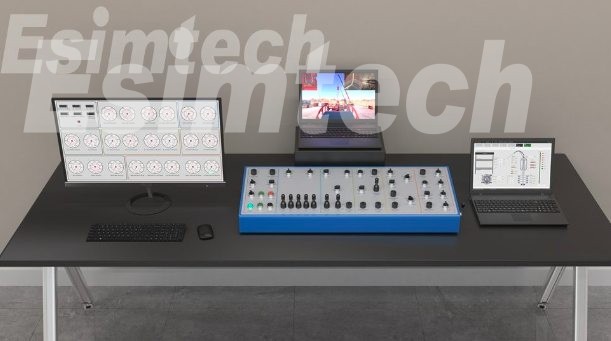What are Coiled Tubing Simulators
Coiled tubing is a valuable tool in the oil and gas industry, enabling various operations with its long, continuous tube wound onto a spool. To optimize performance, increase safety, and reduce costs, the industry relies on coiled tubing simulators. These software programs create virtual environments where users can simulate different scenarios and test various parameters.

Components of a Coiled Tubing Simulator:
User Interface: Provides a graphical platform for users to interact with the simulator, input data, choose parameters, and view results.
Mathematical Models: Utilizes fluid mechanics, thermodynamics, and material science principles to simulate coiled tubing behavior and fluid flow through it. Hydraulic, mechanical, thermal, and chemical models are employed.
Data Management: Handles input and output of data, including wellbore geometry, tubing dimensions, fluid properties, and simulation results for analysis.
Visualization Tools: Generates visual feedback, such as 2D or 3D graphical interfaces and animations, helping users better understand and make informed decisions.
Control System Simulation: Represents the position of coiled tubing, fluid flow, and other relevant parameters in real-time, enhancing the simulation experience.
Scenario Builder: Allows users to create and modify simulation scenarios, specifying wellbore parameters, tubing dimensions, fluid properties, and more.
Features of a Coiled Tubing Simulator:
Realistic Simulation: Uses complex mathematical models for accurate representations of coiled tubing behavior and fluid flow.
Scenario Building: Enables users to create various simulation scenarios and analyze their impact on coiled tubing operations.
Virtual Control System: Provides real-time visual feedback on coiled tubing behavior and fluid flow.
Data Visualization: Presents simulation results in diverse scenarios for better analysis.
Data Analysis: Generates valuable data for further examination and optimization.
Training Tool: Portable coiled tubing simulators aids in operator and engineer training for enhanced safety and efficiency.

Applications of a Coiled Tubing Simulator:
Planning and Design: Helps engineers identify ideal settings for coiled tubing operations.
Optimization: Assists in analyzing different operational aspects for improved efficiency.
Troubleshooting: Detects and addresses potential concerns before real operations.
Research and Development: Facilitates the evaluation of novel coiled tubing technology.
Limitations and Challenges:
Model Accuracy: Mathematical models may not always capture complex interactions accurately.
Data Availability: Limited or incomplete input data can affect simulation accuracy.
Simulation Time: Running complex simulations can be time-consuming.
Cost: Development and maintenance of simulators can be costly.
Complexity: Coiled tube operations involve numerous elements that require precise representation.
Future Directions of Coiled Tubing Simulator:
Artificial Intelligence: AI algorithms could enhance accuracy and efficiency.
Augmented Reality: AR technology for more immersive simulations.
Cloud-Based Computing: Remote collaboration and real-time access to data.
Integration with Other Tools: Combined simulations for a comprehensive view.
User-Friendly Interfaces: Simplified interfaces for broader industry adoption.
In summary, coiled tubing simulators play a crucial role in the oil and gas industry, offering numerous benefits and opportunities for improvement. As technology advances, these simulators will continue to evolve, revolutionizing how coiled tubing operations are planned, executed, and optimized.
- Art
- Causes
- Crafts
- Dance
- Drinks
- Film
- Fitness
- Food
- Oyunlar
- Gardening
- Health
- Home
- Literature
- Music
- Networking
- Other
- Party
- Religion
- Shopping
- Sports
- Theater
- Wellness


